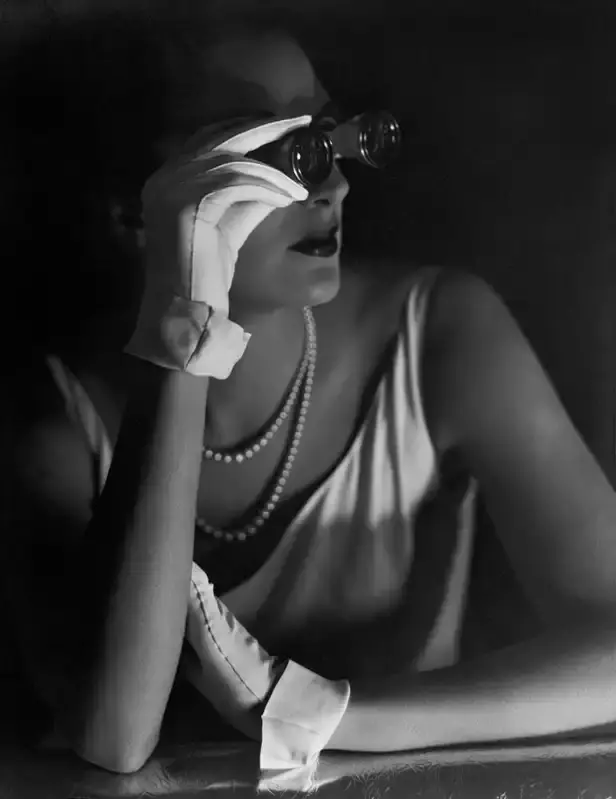Exploring the Aesthetic Vision of George Hoyningen-Huene in Glamour and Avant-Garde
- Margareth
- May 12
- 4 min read
The exhibition George Hoyningen-Huene: Glamour e Avanguardia is currently on view at Palazzo Reale in Milan from January 21 to May 18, 2025. This retrospective celebrates Hoyningen-Huene’s pioneering contributions to fashion photography. Curated by Susanna Brown, the exhibition offers a comprehensive look at his career, from his early days in Paris to his later work in Hollywood.

George Hoyningen-Huene stands out as a transformative figure in 20th-century photography, known for seamlessly blending the allure of glamour with cutting-edge avant-garde ideas. His striking images captured the essence of beauty and offered innovative perspectives on fashion that influence photographers and fashion designers today. This post explores Hoyningen-Huene's signature style, his immense impact on the fashion industry, and his enduring artistic vision.
The Early Life
George Hoyningen-Huene was born in 1900 in Saint Petersburg, Russia, into an aristocratic family that provided him a rich cultural upbringing. Following the Russian Revolution, the family relocated to Germany, where Hoyningen-Huene plunged into the world of art and photography.
Hoyningen-Huene's background shaped his artistic vision. His privileged upbringing allowed him access to art, literature, and culture, enriching his understanding of aesthetics. Today, he is recognized not only for his artistic brilliance but for his ability to combine the sultry glamour of fashion photography with the forward-thinking ideas of avant-garde art.
The Artistic Style of Hoyningen-Huene
Hoyningen-Huene's unique artistic style is marked by a meticulous attention to detail and a strong grasp of composition. His photographs often display dramatic contrasts of light and shadow, using both natural sunlight and studio lighting to create depth. This technique enhances his subjects, whether they are models in exquisite couture or simply evocative environments.
For instance, in a photograph featuring a model draped in a luxurious gown, the interplay of light and shade brings her features to life, making the fabric appear almost tangible. Hoyningen-Huene carefully arranged scenes that conveyed rich narratives. The backdrops were not merely decorative; they added layers of meaning, making viewers feel connected to the story being told.
Glamour as a Central Theme
Glamour is a central theme in Hoyningen-Huene's photography that transcends mere beauty. For him, glamour represented empowerment and self-expression. His models exuded confidence, often dressed in exquisite garments that not only showcased fashion but expressed a lifestyle.
Working with top fashion magazines like Vogue and Harper's Bazaar, his images brought a level of sophistication that was rare in the industry. For example, in a series he shot for Vogue in the 1930s, models were portrayed not just as clothing hangers, but as empowered individuals exuding charisma and allure. This approach redefined beauty, focusing on the essence of femininity and the mystique that surrounds it.
The Influence of Avant-Garde Art
While capturing glamour, Hoyningen-Huene also embraced avant-garde movements, aligning his art with modernist principles. He challenged traditional norms and incorporated elements from surrealism, creating unexpected juxtapositions that pushed the limits of fashion photography.
One notable example is a dramatic portrait of a model posed against an abstract backdrop, where the colors and shapes twist expectations. This artistic risk paved the way for future generations, encouraging photographers to explore new dimensions in narrative and style. His work influenced a wide range of creatives, illustrating how innovative approaches could lead to new heights in visual storytelling.
Legacy and Lasting Impact
Hoyningen-Huene’s legacy is both deep and wide. His innovative techniques influenced the realm of fashion photography, encouraging a new generation of photographers to experiment with themes and aesthetics. Many contemporary photographers like Steven Meisel and Mario Testino credit him as a major influence, leading to a renewed interest in his work in the 21st century.
Hoyningen-Huene’s pioneering spirit resonates today, as many artists explore themes of identity, beauty, and self-expression. The blend of glamour and avant-garde that he championed remains highly relevant, urging contemporary creatives to defy conventions and embrace new artistic possibilities.
A Chronological Journey Through Hoyningen-Huene’s Work
1920s – Paris and the Birth of Fashion Photography
He settled in Paris in 1920. There, he became part of Man Ray's inner circle and collaborated with Surrealist artists like Salvador Dalí and Jean Cocteau. In 1926, he was appointed the chief photographer for Vogue France, a position he held until 1936. His work during this period redefined fashion photography, blending classical art influences with avant-garde elements.






1930s – Expansion and Innovation
After relocating to New York in 1936, Hoyningen-Huene continued his work with Harper’s Bazaar, bringing his distinctive style to American fashion photography. His compositions often featured dynamic poses and dramatic lighting, pushing the boundaries of traditional fashion imagery.











































1940s – Hollywood and Cinematic Influence
In the 1940s, Hoyningen-Huene moved to Hollywood, where he collaborated with directors like George Cukor and costume designers to influence the visual aesthetics of films. His understanding of color and composition informed his work as a color coordinator and costume designer, notably for the film Olympia starring Sophia Loren .
1950s–1960s – Later Works and Legacy
Throughout the 1950s and 1960s, Hoyningen-Huene continued to produce photographic works and documentaries, including The Garden of Hieronymus Bosch and Daphni: Virgin of the Golden Laurels. He passed away in 1968, leaving behind a legacy that continues to influence contemporary photography and fashion imagery .
George Hoyningen-Huene was more than a photographer; he was a visionary who reshaped the world of fashion and artistic photography. His talent for merging elements of glamour with avant-garde creativity created a fresh lens through which we can view beauty and art. His lessons continue to inspire future generations, reminding us of the significance of creativity, exploration, and compelling visual storytelling.
The Milan exhibition not only showcases Hoyningen-Huene’s technical prowess but also his ability to capture the cultural zeitgeist of his time. From the elegance of Parisian haute couture to the glamour of Hollywood cinema, his work remains a testament to the enduring power of visual storytelling






Comments